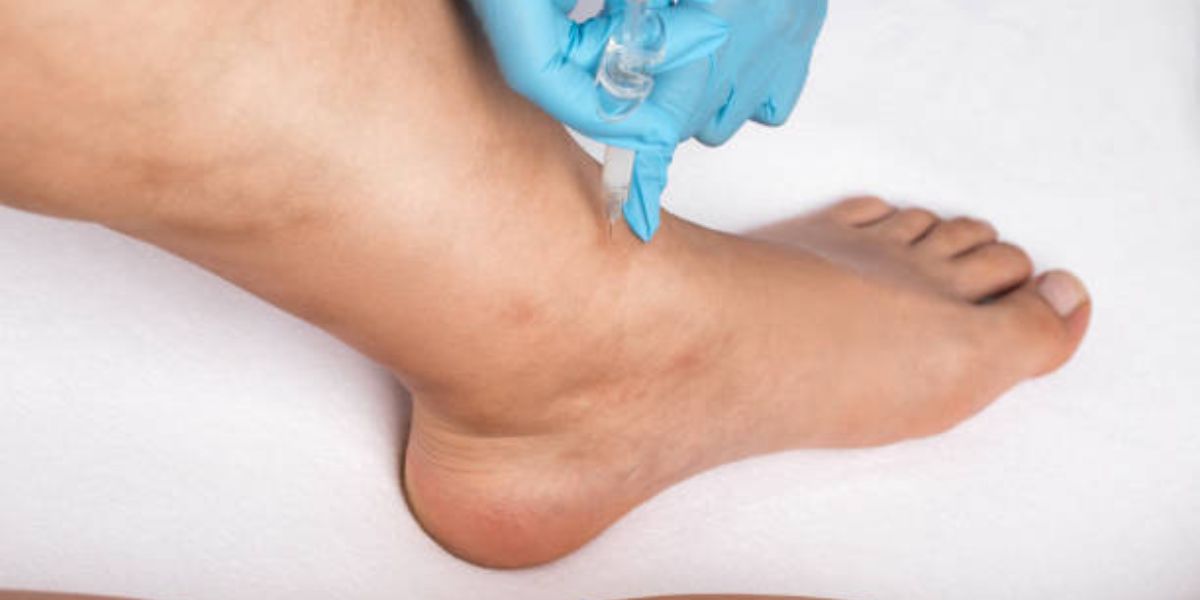If you’re struggling with discomfort or limited mobility due to flat feet, foot surgery for flatfeet might be the solution you need. Flatfoot, also known as pes planus, affects millions and can cause pain, instability, and difficulty walking. While many find relief with orthotic foot support and other conservative methods, some cases require more advanced treatment. When non-surgical options no longer help, flatfoot correction surgery can restore the natural arch and improve function. Understanding the types of reconstructive foot procedures and recovery process is essential before deciding on surgery. This guide will walk you through everything you need to know about surgical options and what to expect for lasting relief.
What Is Flatfoot (Pes Planus)?
Pes planus, or flatfoot, occurs when the arches of your feet collapse, causing the entire sole to touch the ground. There are two main types: rigid flatfoot vs. flexible flatfoot. Flexible flatfoot means your arch appears when not standing, but disappears under weight. Rigid flatfoot has a stiff, flattened arch all the time. Both types can cause issues like pain, reduced balance, or foot fatigue.
Why does flatfoot matter? Without a proper arch, your feet lose their natural shock absorption, which affects your knees, hips, and posture. This can lead to chronic foot pain and mobility problems. You may have heard the term pediatric flatfoot describing flat feet in children, which often improves naturally with age, unlike many adult cases. Understanding what is pes planus? helps you recognize whether your flat feet need attention or not.
Causes of Flatfeet Deformity
Flatfoot deformity can be caused by various factors. Some people inherit weak or low arches, known as genetic flat feet, but others develop it due to injury or health conditions. One common culprit is posterior tibial tendon dysfunction, where the tendon supporting your arch weakens. This often leads to adult acquired flatfoot, a condition that worsens over time.
Lifestyle and age also play a role. Obesity puts extra stress on your feet, while pregnancy can loosen ligaments. Wearing improper shoes without enough arch support can worsen flatfoot. So, understanding the causes of fallen arches in adults is key to early intervention. Whether it’s from birth or develops later, the damage to your arch can affect your whole body.
Common Symptoms of Flatfoot
You might notice aching in the arch or heel area, sometimes swelling near your ankle. These signs are typical flatfoot symptoms in children and adults alike. Flattened foot shape is visible and often linked to difficulty walking or standing for long periods. You might also feel tired feet or pain that worsens with activity.
Complications like bunions or shin splints often accompany flat feet. The pain isn’t just in your feet—it can spread upward, causing knee and hip discomfort. Knowing these symptoms helps you decide when should you see a podiatrist for flat feet? Early diagnosis can prevent further damage and improve your quality of life.
Diagnosing Flat Feet
A proper flat feet diagnosis involves a physical exam where doctors watch how you walk and stand. They may ask you to perform movements to check flexibility in your arch. Imaging tests like X-rays or MRI scans help reveal the exact deformity and any related injuries.
Doctors want to know what does flatfoot surgery involve? but before jumping to surgery, they carefully assess your condition. Diagnosis also distinguishes between pediatric flatfoot and adult cases, since treatment plans differ. A thorough exam ensures you get the most effective and tailored treatment.
Non-Surgical Treatment Options
Not all flatfoot cases need surgery. Many people benefit from arch support devices such as orthotic insoles or braces that provide stability and reduce pain. Orthotic foot support helps correct your walking pattern and eases pressure on your arches.
Physical therapy, including calf stretches and strengthening exercises, can improve your foot’s function. Weight loss reduces strain on your feet. Anti-inflammatory medicines may ease discomfort. For many, these options answer the question how to treat flat feet without surgery? and help delay or avoid surgery altogether.

Surgical Treatment for Flatfoot Correction
When pain persists despite conservative measures, flatfoot correction surgery might be necessary. Surgery aims to restore your foot’s arch, improve alignment, and relieve pain. Surgeons evaluate if you are a good candidate based on your age, activity level, and severity of deformity.
Modern reconstructive foot procedures in the USA have advanced, making surgeries safer and more effective. Recovery varies, but most patients regain significant mobility. The key is knowing is flatfoot surgery worth it? For many, the answer is yes, especially if it stops chronic pain and improves function.
Types of Flatfoot Surgical Procedures
Several surgical options exist for flatfoot deformity surgery, each tailored to specific problems. Medializing calcaneal osteotomy (MDCO) shifts the heel bone to better support the arch. Lateral column lengthening lengthens the outer foot to balance alignment.
Other procedures include tendon transfer surgery to restore damaged tendons, and triple arthrodesis, which fuses three major foot joints for stability. Here’s a simple table showing common procedures:
| Procedure | Purpose | Typical Use |
| Medializing Calcaneal Osteotomy (MDCO) | Realigns heel bone | Flexible flatfoot with tendon issues |
| Lateral Column Lengthening | Lengthens outer foot | Severe flatfoot with imbalance |
| Tendon Transfer Surgery | Replaces damaged tendons | Posterior tibial tendon dysfunction |
| Triple Arthrodesis | Fuses foot joints for stability | Rigid or severe deformities |
Knowing the types of flatfoot surgeries available helps you discuss options with your surgeon.
Pediatric vs. Adult Flatfoot Treatment
Flatfoot in kids often resolves naturally, especially flexible pediatric flatfoot. Doctors usually monitor it unless pain or walking issues develop. In contrast, rigid flatfoot vs. flexible flatfoot in adults is more complicated. Adults may face worsening deformities due to injuries or tendon problems.
Adult acquired flatfoot requires a different approach, sometimes combining surgery and therapy. Understanding the differences between flatfoot in kids vs adults ensures that treatment fits age and condition. Surgery in children is rare but possible in severe cases, while adults more often need correction procedures.
Recovery, Prognosis, and Long-Term Outlook
Flatfoot surgery recovery typically takes several months. Early weeks focus on healing and controlling swelling. Physical therapy helps restore strength and mobility. Most patients can walk normally within 3 to 6 months but full recovery may take longer.
The long-term outlook is good if you follow post-op instructions. Surgery usually improves both foot pain and mobility significantly. Patients often ask, can flatfoot deformity be reversed? Surgery aims to correct deformity and prevent future issues. Many enjoy better function and cosmetic results after reconstruction.
Prevention and Maintenance
Preventing flatfoot deformity involves taking care of your feet daily. Wearing supportive shoes and using orthotic foot support when needed can protect your arches. Regular foot exercises strengthen muscles that hold up the arch naturally.
Maintaining a healthy weight reduces stress on your feet. Learning natural ways to support fallen arches can keep flatfoot from worsening. Routine checkups with a podiatrist help catch problems early. Prevention and maintenance are essential for lifelong foot health.
Flatfoot reconstruction is a journey. With the right knowledge and treatment, you can regain comfort and mobility. Whether through non-surgical flatfoot treatment or flatfoot correction surgery, options exist for every stage of the condition. Keep these facts in mind, and don’t hesitate to seek expert advice when needed.
FAQs
Is it worth getting flat foot surgery?
Yes, surgery is worth it if pain and mobility problems don’t improve with other treatments.
Can a flat foot be corrected by surgery?
Yes, surgery can effectively restore the arch and improve foot function.
What is the best age for flat foot surgery?
The best age is usually adulthood, after foot growth is complete.
Can flat feet be fixed permanently?
Flat feet can often be permanently corrected with proper surgical treatment.
Q: Is there a surgery to fix flat feet?
A: Yes, flat feet can be corrected with reconstructive foot surgery.
Q: What age is best for flat foot surgery?
A: Surgery is typically considered after age 10 if non-surgical treatments fail.
Q: Can you permanently fix flat feet?
A: Yes, surgery can offer a permanent correction in many cases.
Welcome to Heel Tooth! I’m Lee Marvin.

